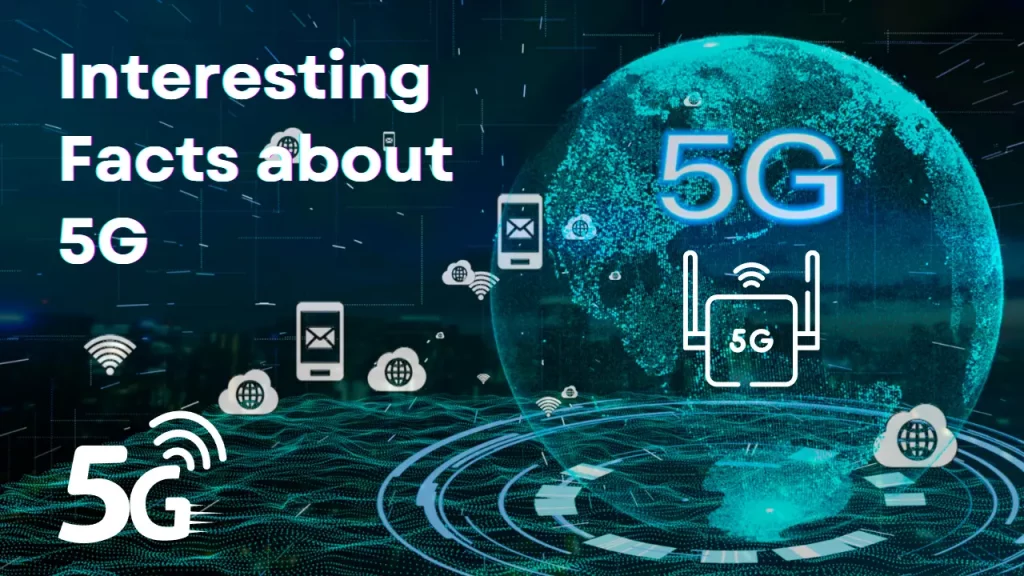5G is a network technology that will allow users to experience faster Internet speeds as well as have constant access to the internet. The next generation of mobile networks has been developed by telecommunication companies so as to give their customers a better user experience and more stable connections.
The 5G revolution will be a cornerstone of the Industrial Revolution 4.0 and a key driver in global economic growth. It is expected to have an impact on all sectors, from automotive to telecommunications, healthcare, and education.

In this article, we will introduce some facts about 5G for those who are interested in this technology.
5G Technology Facts You Should Know About
- 5G is not yet fully defined; however, it can be said that it is an improvement of 4G. It is expected that the 5G network will be stable enough for applications such as driverless cars, smart cities, virtual reality, and self-driving technologies.
- The first international conference on 5G new radio standards was held in 2015 at the University of Surrey in England where delegates discussed research into future development within this field.
- 5G will require massive infrastructure changes to accommodate its higher speeds. One method to meet this requirement is by upgrading current towers with cloud RAN which would allow users to access networks more easily.
- 5G will not only exist in mobile networks but also fixed wireless networks. One example of this is that 5G could allow users to use their phone as a home broadband connection by utilizing the same frequency bands used for TV broadcasting.
- Noone owns 5G technology. Many companies and organizations are working towards bringing this new technology into our lives, but no one company can claim ownership.
- OFDM is a method for reducing interference in the transmission of digital signals. 5G uses it as well, alongside an air interface that’s been improved upon with NR technology to provide quicker speeds and more stable connections than before! Sub-6 GHz bandwidths will also be used alongside mmWave ones so you can get your data quickly no matter where life takes you.
- As the world moves towards 5G technology, peak data rates will reach up to 20 Gbps. This is possible with IMT 2020 requirements and Qualcomm Technologies’ flagship Snapdragon X65 solution which can achieve 10 Gb/s in downlink telecommunication systems!
- The current 4G networks have an average latency speed of 200ms, meaning that data must travel for this length of time before reaching its destination. In contrast, 5G’s improved latency speeds can be as low as 1 ms – much faster than the old 4G networks.
- From a user perspective, 5G is lightspeed compared to the human eye when it comes to interpreting visual information. Scientists have estimated that our eyes react to visual stimuli at a latency of about 250 milliseconds (ms). This means that the incredibly fast data transmission speeds of 5G, are technically 250x faster than us in terms of responding to instructions.
- Comparable in speed to fiber-optic networks, 5G is capable of delivering up to 1,000x more capacity than 4G.
- With 5G technology comes the need for more base stations in order to transmit this network. Whether we’re talking about small cells, macrocells, or mmWave, all of these new types of towers and antennas are essential in bringing faster speeds to users. Additionally, these towers can help reduce latency and enable enhanced mobile broadband experiences like virtual reality and augmented reality.
- 5G uses radio waves with very high frequencies, ranging from 30 to 330 GHz, compared to previous generations. This will translate into faster speeds, better connections, and lower latency.
- Global 5G subscriptions are expected to skyrocket over the next several years, increasing from just over 12 million in 2019 to over 4 billion in 2027 (according to Statista). This exponential growth is due, in part, to developers working hard to create new ways for people around the world to leverage this groundbreaking new tech and provide consistent access, no matter if you’re living in a rural area or an urban center.
- As of June 2022, there are around 250 million global 5G subscribers.





